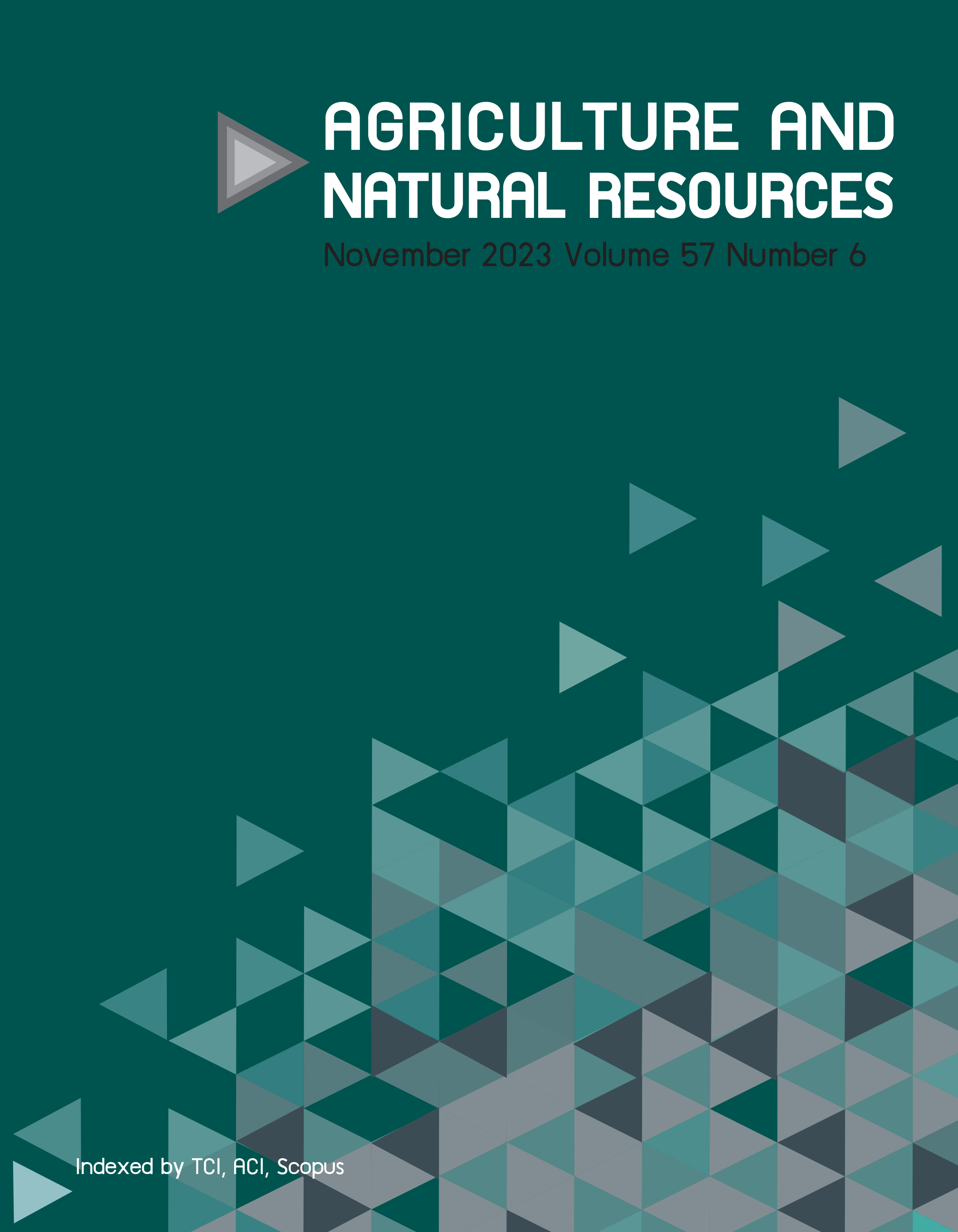Genetic variability and heritability in 2nd generation mutant population from “Gando Keta” sorghum mutation
Keywords:
Heritability, Lethal dose of gamma radiation necessary to prevent 50% of seed germination (LD50), Radiation mutation, VariabilityAbstract
Importance of the work: The sorghum mutant “Gando Keta”is known to have a sticky texture but low production levels, with mutations expected to produce plants with improved yields.
Objectives: To use gamma radiation to produce sorghum mutants of “Gando Keta” with high yield and fluffy texture.
Materials & Methods: Explants (2 mm high, aged 3 d) were exposed to radiation doses in the range 10–100 Gy in 10 Gy increments. The shoots were acclimatized and their variability was observed. Then, 30 2nd generation mutant (M2) plants for each dose of 40 Gy, 50 Gy, 60 Gy and 70 Gy were planted and observed for plant height, panicle diameter, panicle length, wet and dry panicle weights and seed weight.
Results: Analysis of variance showed significant differences in mean plant height, stem diameter and panicle length. Radiation with doses of 40 Gy and 50 Gy produced significantly greater plant heights than those irradiated with a dose of 70 Gy. Observations on the growth characteristics of the six selected genotypes showed that the genotype "GK50-18" had a significantly greater plant height compared to M2, while the genotypes "GK60-13" and "GK70-5" were significantly lower than the M2 population. Seed weight had wide genetic variability and high heritability, so selection should be based on seed weight characters using the pedigree technique. Amylose analysis identified genotypes with lower amylose contents that should be further tested to determine the stability of the results.
Main finding: Selection on the 2nd generation mutant (M2) population obtained six genotypes with higher productivity: "GK50-18", "GK50-19", "GK60-11", "GK60-13", "GK60-9" and "GK70-5".
Downloads
Published
How to Cite
Issue
Section
License
Copyright (c) 2023 Kasetsart Universityonline 2452-316X print 2468-1458/Copyright © 2022. This is an open access article under the CC BY-NC-ND license (http://creativecommons.org/licenses/by-nc-nd/4.0/),
production and hosting by Kasetsart University of Research and Development Institute on behalf of Kasetsart University.







